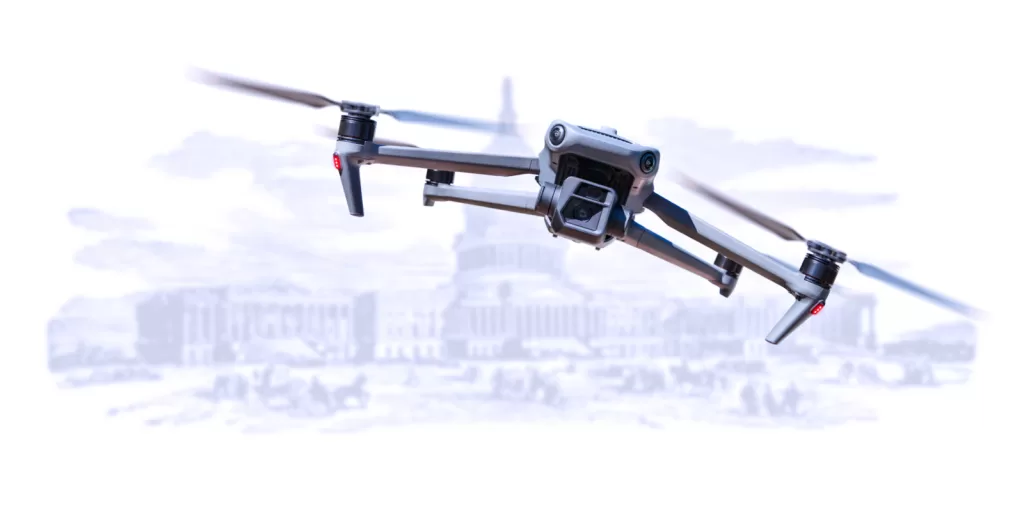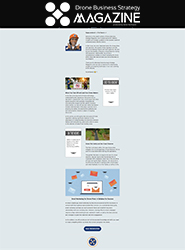
“Think strategy, not just specs.” That should be the mantra for every drone pilot entrepreneur watching the uncertainty swirl around Chinese-made drone bans. It’s not just a matter of if your favorite drone brand is impacted—it’s when, how hard, and what you’ll do about it that count. Lately, the buzz has been deafening: Will the U.S. government ban or restrict DJI drones and other China-based UAV systems due to national security concerns? If so, what happens to the small business drone operator who’s built their toolkit—and livelihood—around these platforms?
At Drone Business Strategy Magazine, we’re zooming out to help you think bigger and forecast smarter. Because this moment isn’t just about regulatory panic. It’s a moment to sharpen your equipment strategy and brace your business for what comes next.
The Problem: Uncertainty in the Air
Let’s address the elephant in the sky: DJI dominates the drone market for a reason. Their engineering is elite, their prices are competitive, and their innovation cadence is unmatched. But as geopolitical tensions intensify, DJI drones are becoming a political hot potato.
U.S. government agencies have raised red flags over potential data privacy and national security risks posed by Chinese-manufactured drones. While some bans have already been enacted in government and defense sectors, there’s a growing push to expand those restrictions to broader markets—including private business and hobbyists.
What happens if these efforts succeed?
For the small operator—especially in real estate, content creation, and event work—this could become a business-critical disruption. The FAA may not ground your current drone, but tariffs, retail restrictions, or supply-chain limitations could make future upgrades or replacements painfully expensive—or unavailable altogether.
Russ from 51Drones Is Right: We’re Not the Priority
In a recent commentary, Russ from 51Drones nailed a crucial point: We, the small operators and solo-preneurs, are not the focus of domestic drone development efforts.
“Nobody in Washington is looking to fund the development of a $699 camera drone for hobbyists.”
He’s absolutely right. The government’s focus is on defense, enterprise, and industrial drone solutions—where big money meets national security. And while building a domestic drone manufacturing base is a good long-term move, it won’t help the average commercial drone pilot today. We’re left straddling an awkward middle ground—waiting, watching, and wondering what our options will be.
Our Strategic Commentary on the Commentary
Russ offers a rallying cry for American innovation—urging engineers and entrepreneurs to build that elusive “Made in the USA” drone. His optimism is energizing. But as business strategists, we have to go deeper.
Here’s what we want you to think about:
1. Anticipate the Pricing Shift
Tariffs and trade limitations will push DJI drone prices higher. Plan for this. That $999 upgrade might be a $1,599 decision next year. If you’re forecasting your business expenses, bake in inflation and access delays. Your current gear might need to last longer than you’d hoped—budget accordingly.
2. Diversify Your Equipment Sources
Start researching alternative brands now—Skydio, Autel, Parrot, and other domestic or non-China-based drone makers. They’re not DJI, but the gap is narrowing. Even if you don’t switch yet, knowing what’s out there puts you ahead of the panic when policy changes hit.
3. Track Section 232 Like a Stock
Section 232—the investigation that could result in sweeping tariffs—is your strategic signal. When that decision drops, you’ll know how quickly the market will change. Treat it like a quarterly earnings report: watch it, prepare for it, and plan how you’ll react.
4. Expect a Consumer Market Gap—and Opportunity
Russ is right again—when DJI access becomes restricted or overpriced, a vacuum opens. And that means opportunity. Whether you’re a manufacturer, marketer, repair technician, or educator—fill the gap. Strategic players will emerge, not by flying better drones, but by solving better problems.
5. Extend the Lifecycle of Your Existing Gear
This is not the year to abuse your drone on risky flights for flashy footage. Care for your existing equipment like it’s going extinct—because replacement might be delayed, difficult, or too costly. Implement maintenance routines and invest in storage and transport protection.
What Can We Expect?
Here’s our forecast in five digestible points:
- DJI isn’t going away overnight. But accessing their products may become more expensive and limited within 12–24 months.
- Tariffs and sanctions will likely push domestic innovation—but it will focus on enterprise, not affordable commercial models.
- Independent U.S. drone builders will emerge, but adoption will be slow unless pricing and performance can compete.
- The business-savvy pilot will adapt early, either by diversifying equipment or pivoting service offerings to avoid single-brand dependency.
- Long-term outcome: more options—and likely a stronger, more diverse drone ecosystem for all.
Takeaway
Loyalty to DJI is understandable. Sentiment is strong. But sentiment doesn’t pay the bills—strategy does. This is your moment to think like a CEO, not a fanboy.
Prepare, pivot, and position yourself as a drone operator who thinks ahead—not one who gets blindsided.
And if you’re an innovator sitting on that idea for the next great American-made drone—heed Russ’ words: “Do it now.” The timing won’t get better. And the market is hungry.
As always, we’ll be watching, reporting, and helping you navigate every turn in the sky ahead. 😉 T
If you have any questions, let us know! If you’d like to hire us, you can get more information here.
Written by: Tony Marino, MBA – FAA Certified Part 107 Commercial Drone Pilot and Chief Business Strategist at Aerial Northwest
Disclaimer: The information provided in this blog post is for general informational purposes only and should not be construed as legal advice.
Drone Pilot MBA (Podcast):
Are Drone Bans Putting Your Business Strategy at Risk?
Resources
FAA Resources: FAA DroneZone
Article: What Does it Mean to Decode the Drone Industry?
Article: Pitch Perfect: Guide for Drone Pilots to Get Jobs
Drone Service Providers Alliance
Commercial Drone Alliance
Starting Your Own Drone Service Business
Pick up your copy today on Amazon and wherever fine books are sold.

DRONE BUSINESS STRATEGY MAGAZINE
A free digital publication made exclusively for all small business drone pilots to them help start-up, become profitable while sustaining a competitive advantage within the drone service industry sector they opt to serve.
“If you love to fly, we’d love to have you come aboard!”
We share your information with no one. Our Privacy Policy.










2 Comments
Leave your reply.